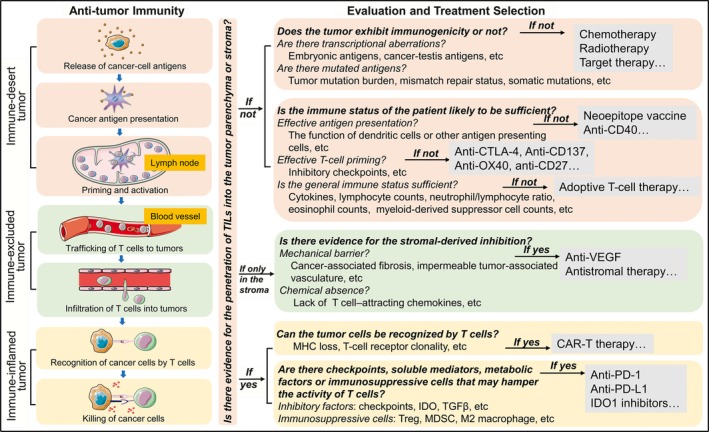Figure 1.

The evaluation of the cancer‐immune interactions. A series of different steps, called cancer‐immunity cycles, have been proposed. The tumor microenvironment can be divided into three phenotypes according to the cancer‐immune interactions. The immune‐desert phenotype, characterized by a paucity of T cells in either tumor parenchyma or the stroma, results from the absence of immunogenicity, or a lack of appropriate T‐cell priming or activation. In the immune‐excluded tumors, the immune cells cannot penetrate the tumor parenchyma but instead are retained in the stroma, reflecting a specific chemokine state or the presence of particular vascular barriers. Immune‐inflamed tumors are characterized by the infiltration of various subtypes of immune cells, including immune‐activated and immune‐inhibitory cells; the immune cells are positioned in proximity to the tumor cells, indicating that a preexisting antitumor immune response is arrested. Each phenotype is associated with specific underlying mechanisms that may prevent the host's immune response from eradicating cancer. Hence, each step in the cancer‐immunity cycle should be carefully evaluated to determine which inhibitory factor is dominant, thus guiding the selection of precise therapies accordingly
